Info
Subfamily: Panicoideae
Genus etymology: Dichanthium = "paired flower" [Greek] refering to the difference between the basal homogamous and the other heterogamous spikelets
Species etymology: tenue = "thin" [Latin] refering to the pedicels
Photosynthetic type: C4 (warm season)
Nativity: naturalized - accidental
First recorded in Hawaiʻi: 1936
Map
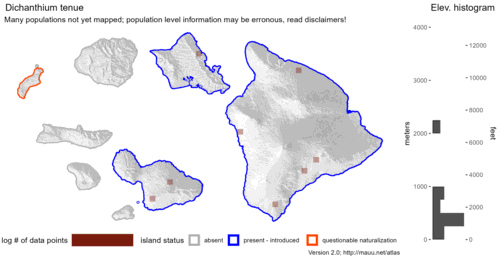
Inflorescence
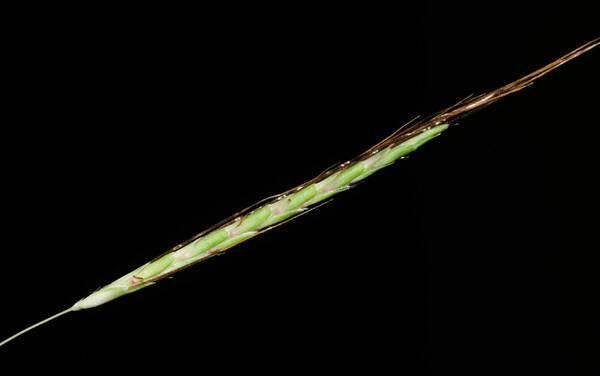

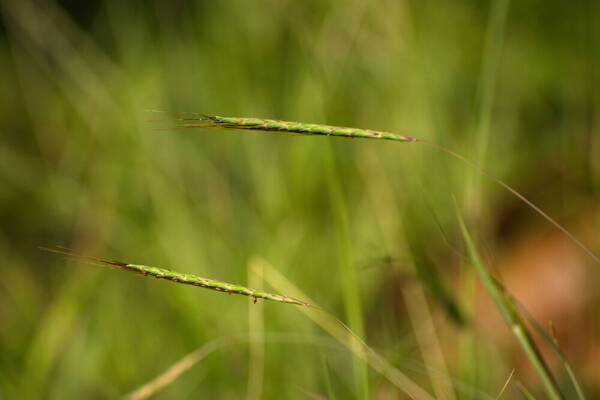
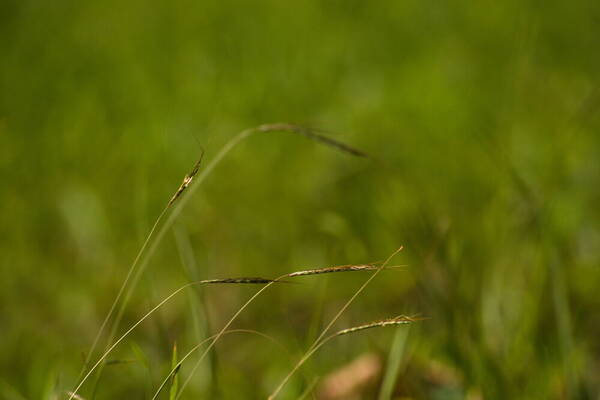
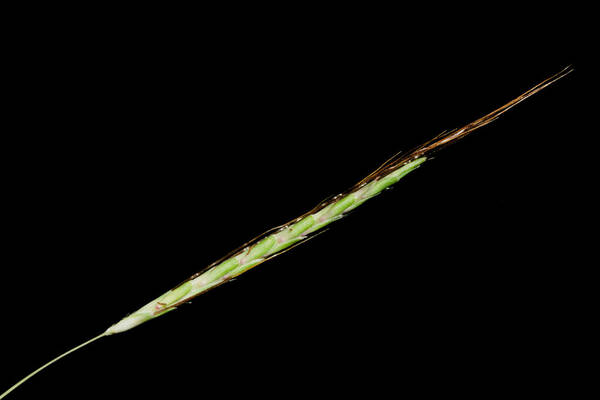
Plant
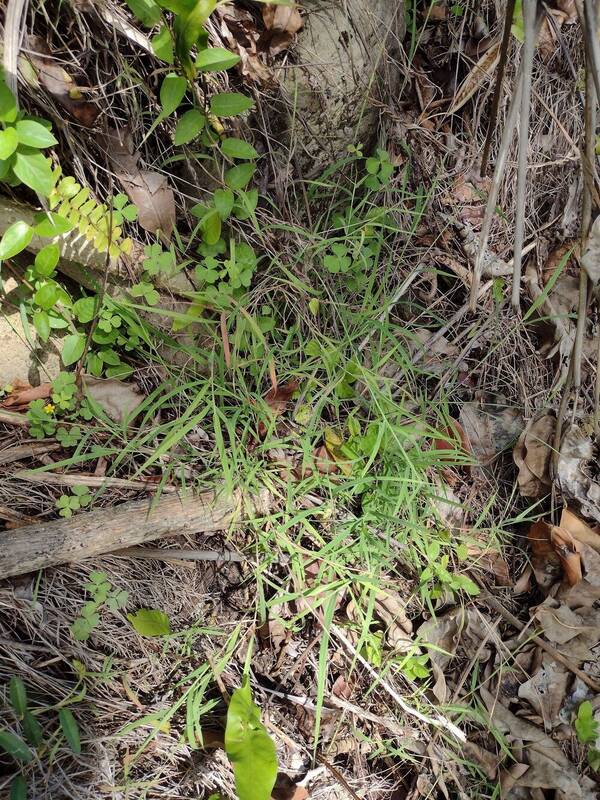
Habit

Spikelets
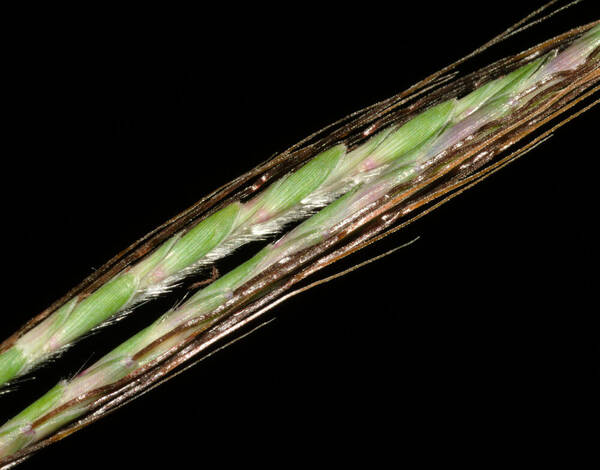
Node
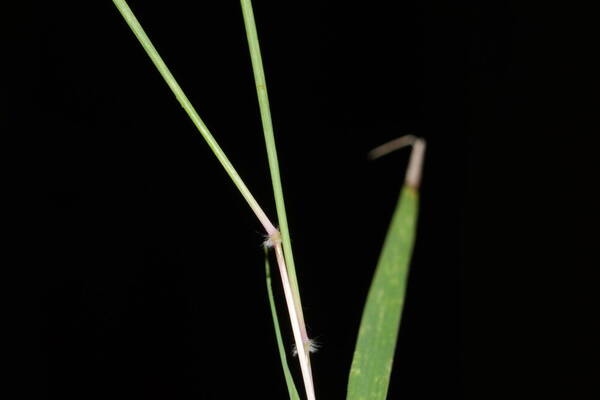
Description
Habit: Perennial; caespitose. Culms erect; 30-70 cm long; 2-4 -noded. Culm-internodes channelled. Culm-nodes bearded. Lateral branches lacking. Leaf-sheaths glabrous on surface. Ligule a ciliolate membrane; 0.5-0.75 mm long; truncate. Leaf-blades 7-15 cm long; 2-3.5 mm wide. Leaf-blade surface scaberulous, or scabrous; glabrous, or pilose; with tubercle-based hairs. Leaf-blade apex acuminate. Inflorescences: Inflorescence composed of racemes. Racemes 1-3; single, or paired, or digitate; 3-6 cm long. Rhachis fragile at the nodes; subterete; ciliate on margins. Rhachis hairs lengthening towards internode tip; 1-1.5 mm long. Rhachis internodes linear. Spikelets in pairs. Fertile spikelets sessile; 1 in the cluster. Companion sterile spikelets pedicelled; 1 in the cluster. Pedicels linear; without a translucent median line; ciliate; hairy all along but hairs longer above; with 1-1.5 mm long hairs. Spikelets: Basal sterile spikelets well-developed; 2-4 in number; barren; smaller than fertile. Basal sterile spikelet lemmas awnless. Companion sterile spikelets well-developed; male; elliptic; 4-6 mm long; as long as fertile; separately deciduous. Companion sterile spikelet glumes 9 -veined; ciliate on margins. Companion sterile spikelet lemmas enclosed by glumes; muticous. Spikelets comprising 1 basal sterile florets; 1 fertile florets; without rhachilla extension. Spikelets oblong; dorsally compressed; 4-6 mm long; falling entire; deciduous with accessory branch structures. Spikelet callus pilose; base obtuse; attached transversely. Spikelet callus hairs 0.5-0.9 mm long. Sterile Florets: Basal sterile spikelets well-developed; 2-4 in number; barren; smaller than fertile. Basal sterile spikelet lemmas awnless. Companion sterile spikelets well-developed; male; elliptic; 4-6 mm long; as long as fertile; separately deciduous. Companion sterile spikelet glumes 9 -veined; ciliate on margins. Companion sterile spikelet lemmas enclosed by glumes; muticous. Fertile Spikelets: Spikelets comprising 1 basal sterile florets; 1 fertile florets; without rhachilla extension. Spikelets oblong; dorsally compressed; 4-6 mm long; falling entire; deciduous with accessory branch structures. Spikelet callus pilose; base obtuse; attached transversely. Spikelet callus hairs 0.5-0.9 mm long. Glumes: Glumes dissimilar; exceeding apex of florets; firmer than fertile lemma. Lower glume oblong; 1 length of spikelet; chartaceous; of similar consistency above; without keels; keel-less except near apex; 8-9 -veined. Lower glume surface smooth, or asperulous. Lower glume margins ciliolate. Lower glume apex truncate, or obtuse. Upper glume lanceolate; 1-keeled; 3 -veined. Florets: Basal sterile florets barren; without significant palea. Lemma of lower sterile floret ovate; hyaline. Fertile lemma linear; hyaline; without keel; 1 -veined. Lemma apex entire; awned; 1 -awned. Principal lemma awn apical; geniculate; 22-28 mm long overall; with twisted column. Column of lemma awn glabrous. Palea absent or minute. Flowers: Anthers 3; 1 mm long. Fruits: Caryopsis with adherent pericarp; oblong; 2.5 mm long. Distribution: Australasia: Australia. Pacific: southwestern and north-central.
(Description source: Clayton, W.D., Vorontsova, M.S., Harman, K.T. and Williamson, H. (2006 onwards). GrassBase - The Online World Grass Flora. Available at https://powo.science.kew.org )